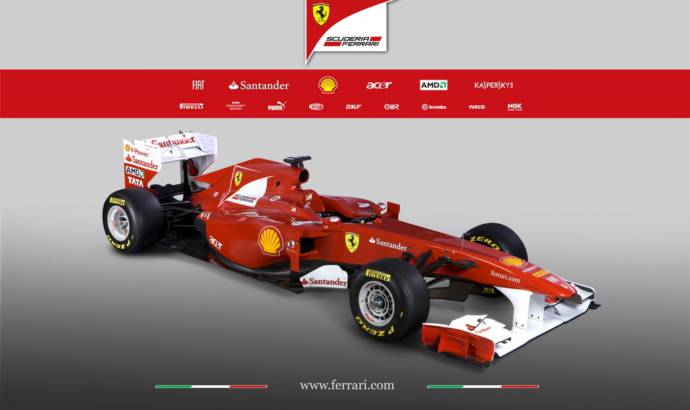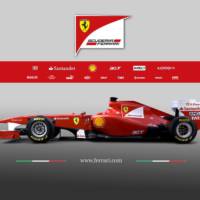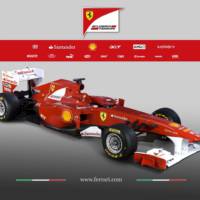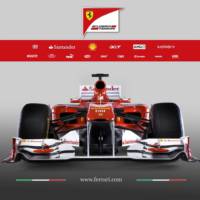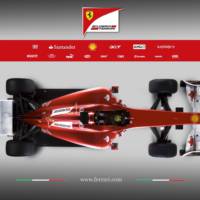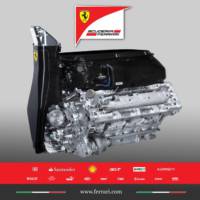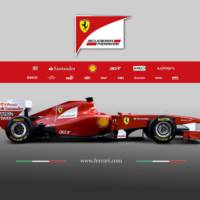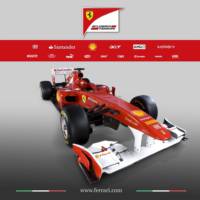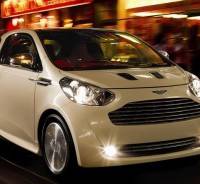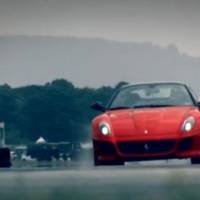The Prancing Horse has unveiled their 57th single-seater called the Ferrari F150 which will compete in the 2011 Formula 1 World Championship. The company has chosen this name as a tribute to the 150 years since the Unification of Italy, which is being celebrated this year.
Luca di Montezemolo has underlined once again that their mission with the Ferrari F150 is to win the title “This year we have to win and we will do our best to win”
Internally codenamed as the 662, the Ferrari F150 is complying with the new set of regulations which means it features a redesigned front, a hydraulically adjustable rear wing, and new fuel cell with different dimensions. The KERS system is also back on the Ferrari F150 due to the increase in the car’s minimum weight, plus the weight distribution is now in accordance with the stricter rules, which also apply to safety.
Just like the rest of the cars competing in 2011, the Ferrari F150 will feature wheel retaining cables in case of accidents, while the air intakes are now smaller than before. The rear suspension has been redeveloped, the exhaust system is the same as the one from the second half of 2010, while the cooling system has been adapted due to the return of KERS.
The Braking system has been completely redesigned, while the engine is the same as on the 056, due to the freeze on engine performance development.
For complete details regarding Ferrari F150 Formula 1 Car check ot the official press release below.
Ferrari press release :
The F150 is the fifty-seventh single-seater built by Ferrari
specifically to compete in the Formula 1 World Championship. The
Maranello marque chose the name as a tribute and celebration of the one
hundred and fiftieth anniversary of the Unification of Italy.
The project, which goes by the internal code name of 662, represents the
Scuderia’s interpretation of the technical and sporting regulations
that apply this year. Various factors influenced the design of the car,
especially on the aerodynamic front, to the extent that the F150 can be
seen as severing ties with the recent past. The innovative aspects are
in part dictated by changes to the regulations and partly down to
original thinking from our designers. As far as the rule changes from
2010 are concerned, the double diffuser and the blown rear wing are
banned, as is the use of apertures in the front part of the floor, while
the use of an hydraulically controlled adjustable rear wing has been
introduced. After an unofficial agreement saw its use banned for 2010,
KERS is back this year, thanks partly to the increase in the car’s
minimum weight and stricter controls on weight distribution figures. The
Scuderia has decided to incorporate this technology on the F150 and
this has had a significant impact on the design, also taking into
account that the dimensions of the fuel cell are very different to what
they were in 2009. Also significant are changes dictated by the
introduction of stricter safety requirements in terms of crash-tests,
cockpit area protection and wheel-retaining cables for use in accidents.
At first glance, the front part of the F150 monocoque appears to be
higher than that of the F10. The openings for the side air intakes are
reduced in size, while the layout of the dynamic one above the driver’s
head has been modified. The rear suspension features a new design, while
that at the front has been modified, following changes to the front
part of the chassis. The exhaust system layout is similar to that
adopted for the second half of last season and the cooling system has
had to take into account the return of KERS and the new air exit ducts.
The braking system has been completely redesigned in collaboration with
Brembo.
However, the aerodynamic package sported by the car at the presentation
is very different to the one which will be seen for the first race in
Bahrain: for the early stages of testing, the decision was taken to
concentrate on development aspects linked to the mechanical components
and on developing an understanding of the Pirelli tyres, while
continuing to push on the development of aerodynamic performance in the
wind tunnel. Indeed, the tyres will be another significant new element
this season: after a thirteen year relationship with Bridgestone, this
year it is Pirelli who take up the baton as sole supplier to Formula 1
for the next three years and thus provide the tyres for the cars from
Maranello. Given that the teams have so far only managed two days of
testing with the new tyres back in November, clearly the fifteen days of
testing prior to the start of the season will be very important when it
comes to adapting the handling of the car to the tyres.
As the freeze on engine performance development is still ongoing, there
have been no actual modifications to the 056 engine, but that does not
mean Ferrari’s engine specialists have been idle. Work has gone into
improving reliability, working especially on the pneumatic front, as
well as on reducing costs. Furthermore, the reintroduction of KERS has
led to a substantial change in the architecture of the front end of the
engine, with modifications to the drive shaft system of the KERS itself
and the crankshaft and this has led to changes to the cooling and
lubrication systems. The kinetic energy recovery system, designed by
Ferrari, has been produced in conjunction with MTS and Magneti Marelli
and was fine tuned based on experience acquired in 2009, with the aim of
reducing its size and weight, while maintaining, in accordance with the
regulations, the maximum useable power and its useage cycle over one
lap. This is another area where great attention has been paid to cost
reduction, both in terms of its development and the way it is run, so as
to make the system equally viable for our customer teams, Sauber and
Toro Rosso. The positioning of the KERS within the fuel cell was a
further impetus to look at solutions aimed at reducing fuel consumption:
in this area, the contribution from a key partner in the form of Shell
was vital and will continue to be so throughout the season.
The number of testing days available to the teams remains the same, with
15 prior to the start of the season, therefore preparatory work on the
test beds, prior to taking to the track has been ever more important,
both on the chassis side and for areas such as the gearbox, engine and
KERS.
As is always the case at Ferrari, great attention has been paid to the
performance and optimisation of all materials used, in the design stages
and when going through quality control, striving to maximise
performance levels and reliability, while delivering the highest
possible safety standards.
Ferrari F150 Video :

